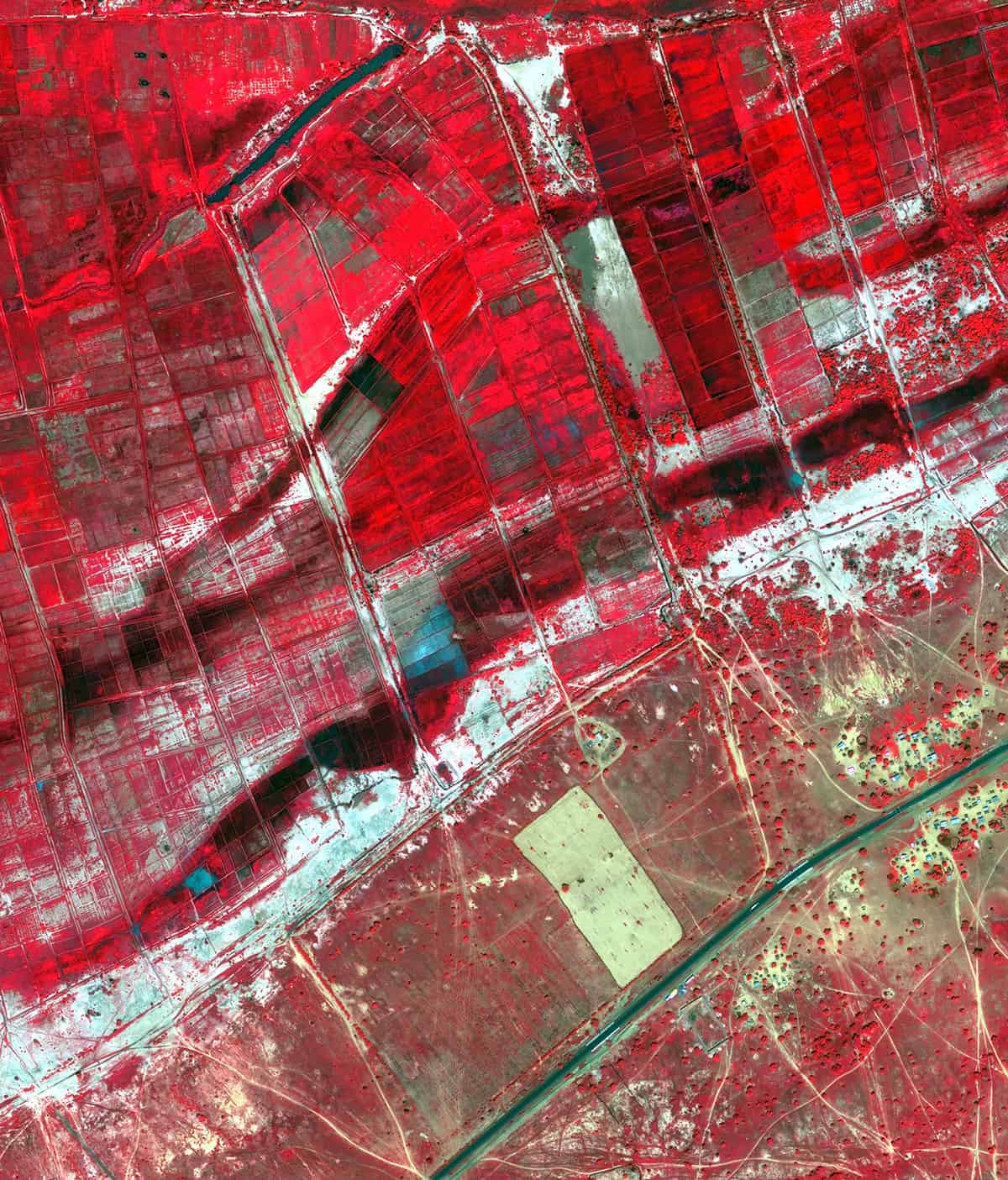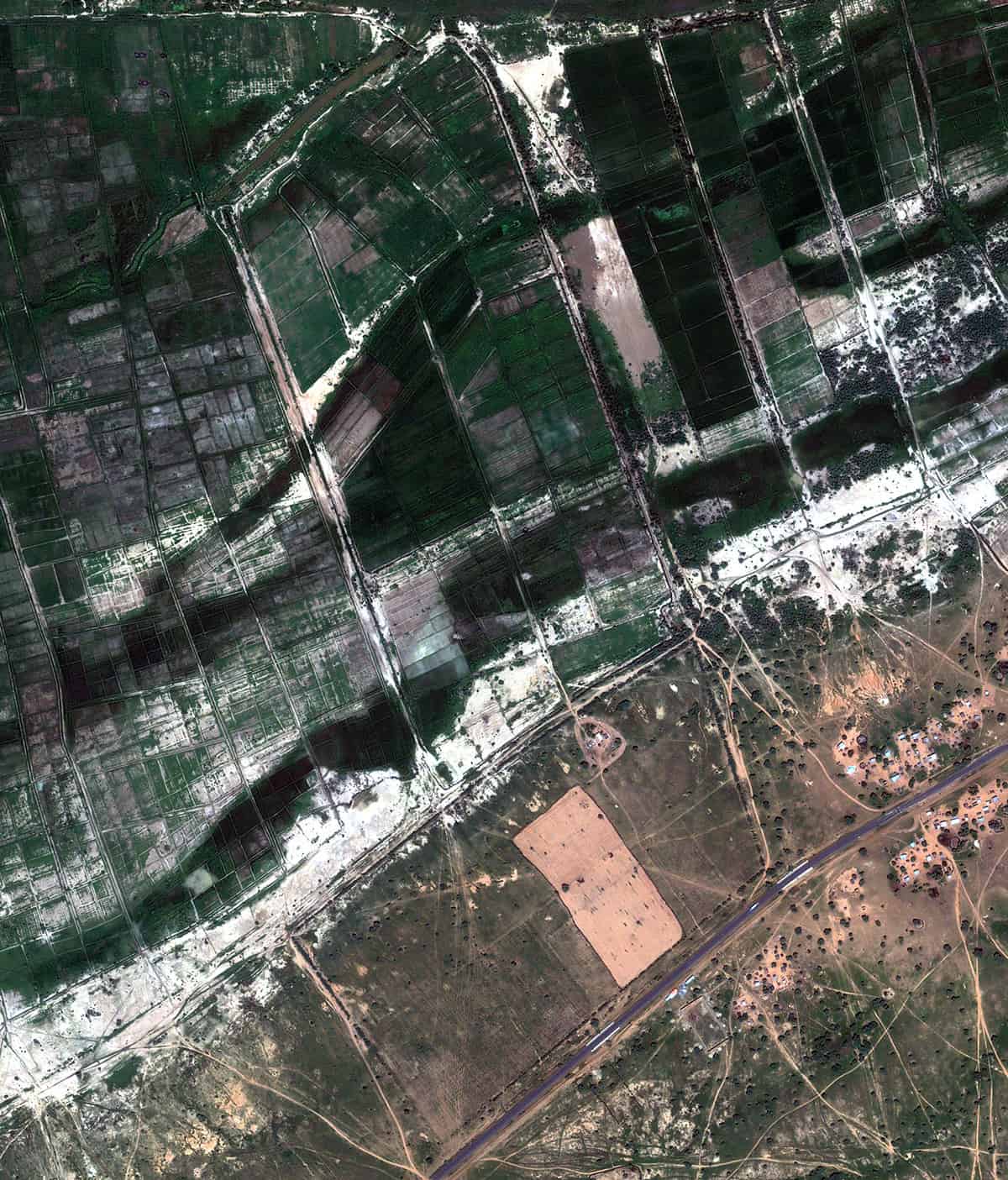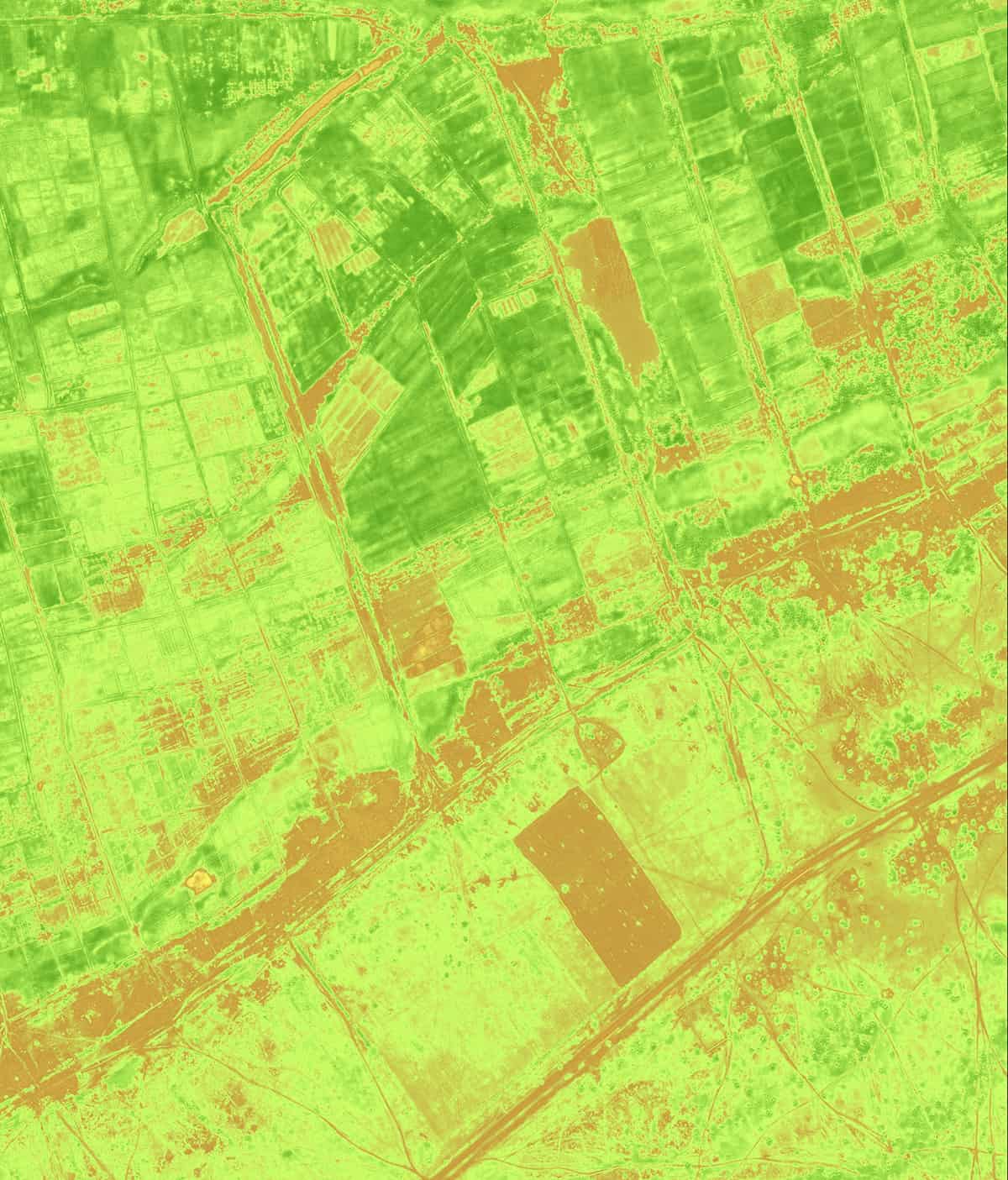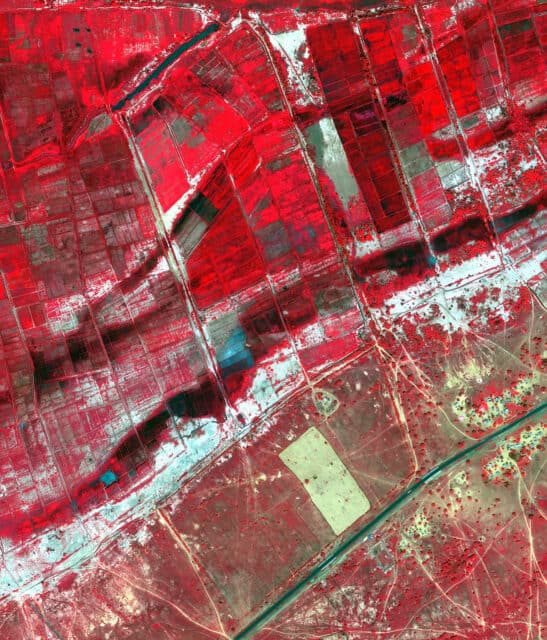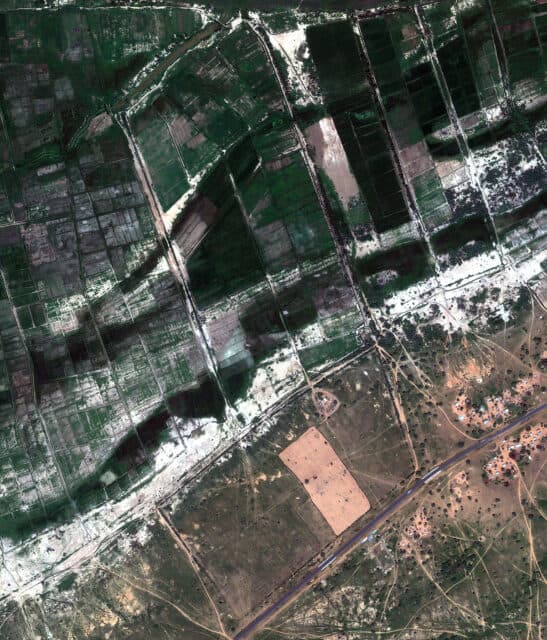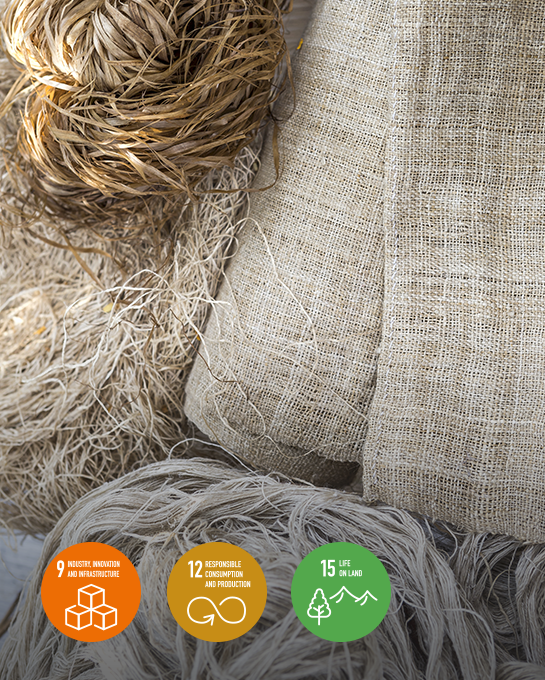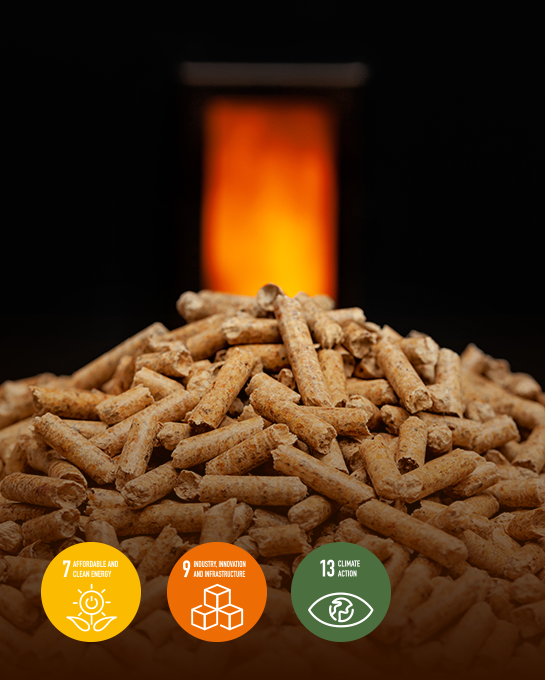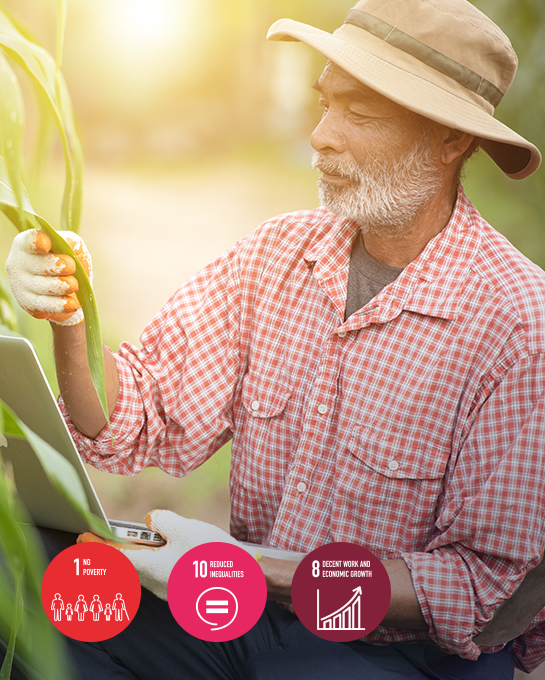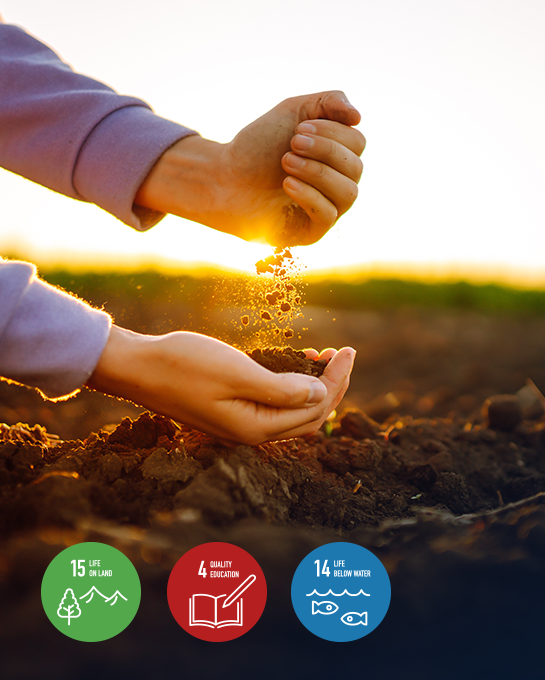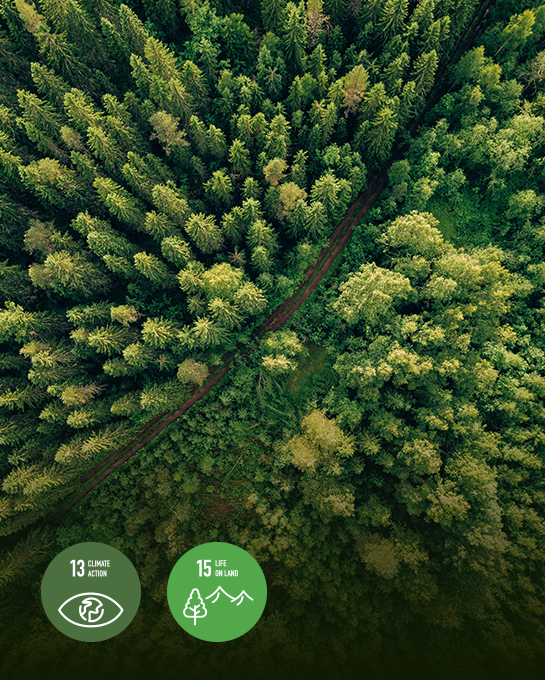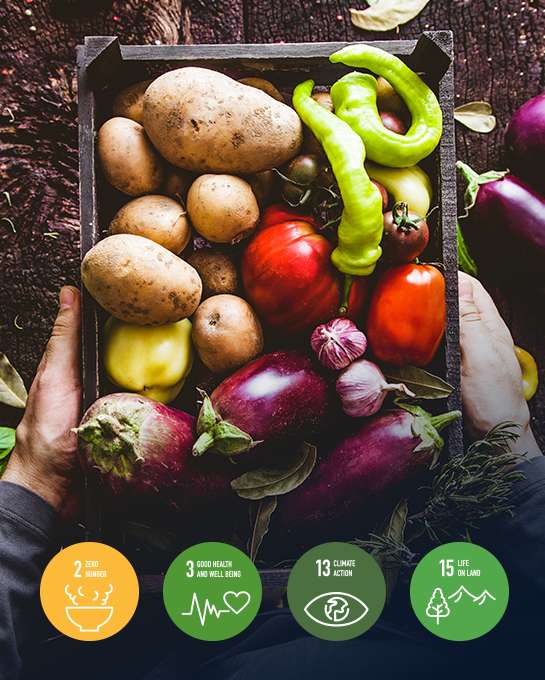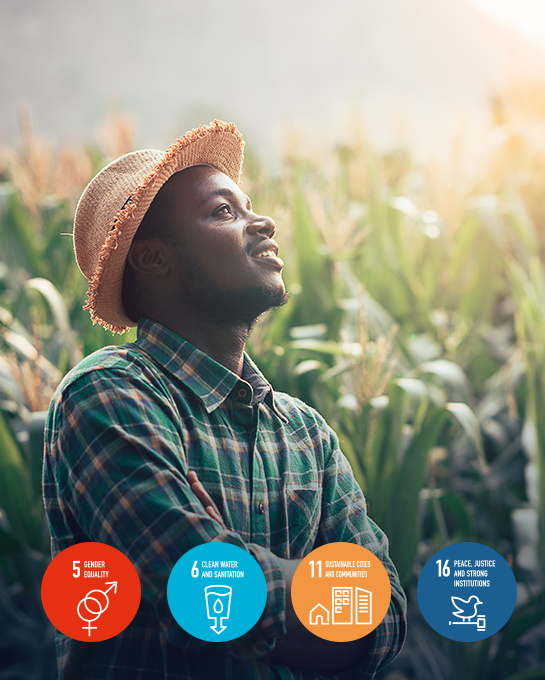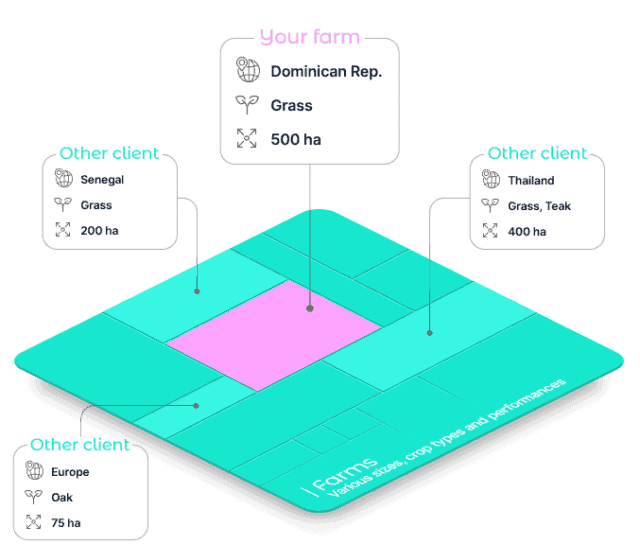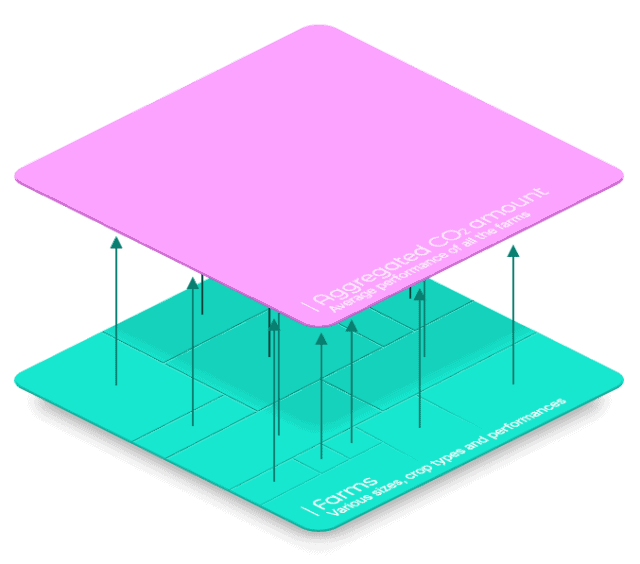Removing CO2 from the atmosphere emissions with C4 grasses
The most affordable and scalable method of CO2 removal is establishing C4 grasses on marginal land in order to build new soils or to regenerate harmed farmland.
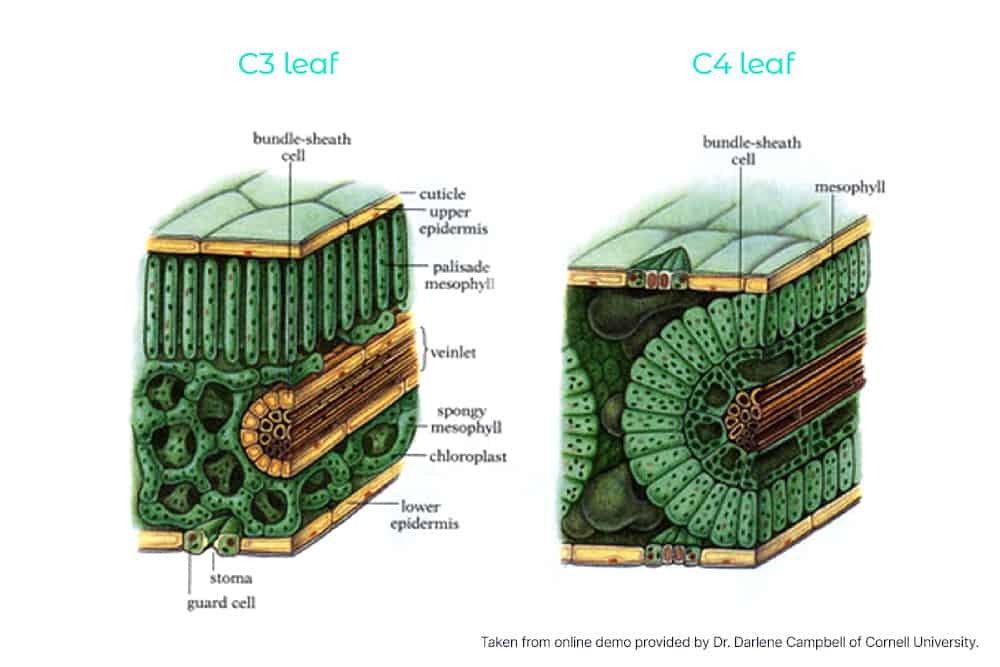
While only 5% of the world’s biomass are C4 plants, they account for 23% of all terrestrial carbon storage. Newly planted grass can outperform the CO2 removal capacity of newly planted trees by a factor of 10 to 1, measured over a 10 year period.
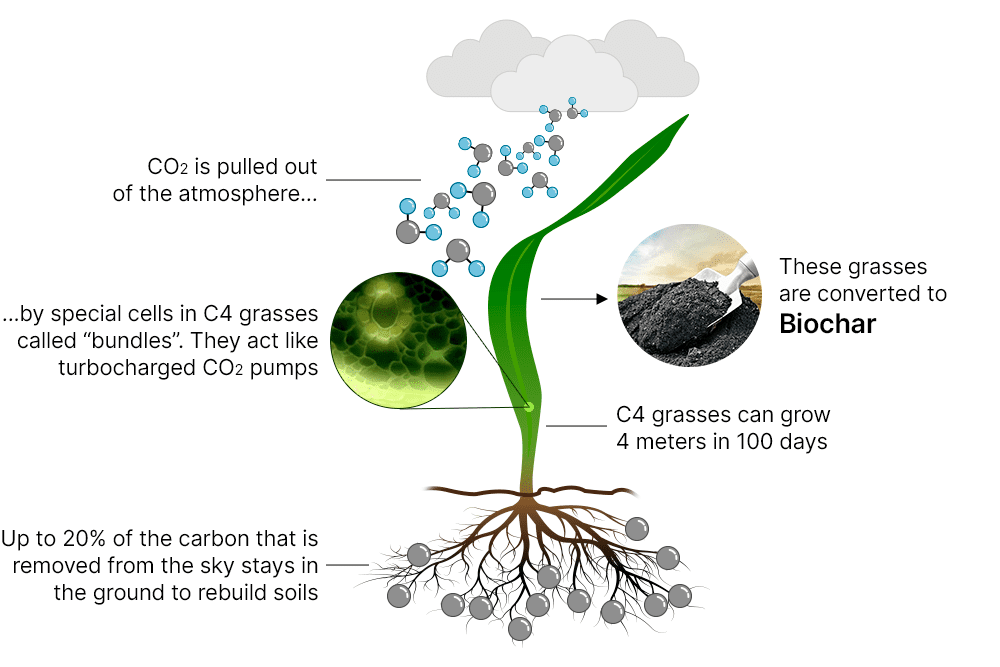
Below ground, extensive grass root systems deposit carbon in the soil through mycelium networks. We only count what remains in the ground over a long-term period. The above ground biomass is subjected to industrial scale pyrolysis to become biochar, for 1,000+ years of permanent storage when it is returned to the earth as a soil enhancer.
As explained in this excerpt from a BBC documentary, C4 grasses can grow 4 meters tall in just 3 months, allowing for two, and sometimes three, harvests per years
Copyright ©BBC
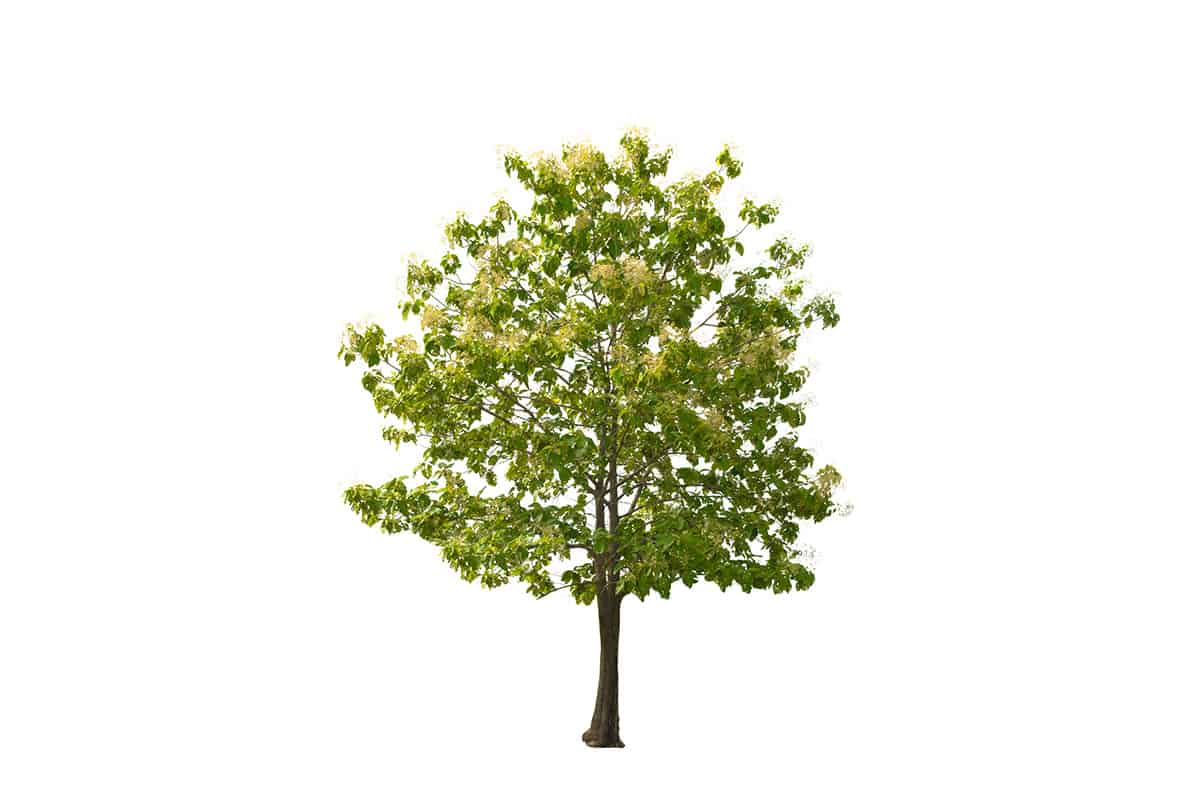
We have chosen Teak to be part of our global carbon token structure because they combine fast growth and rapid carbon absorption with a very high value of the wood. Teak can expand our projects into tropical areas in Asia.
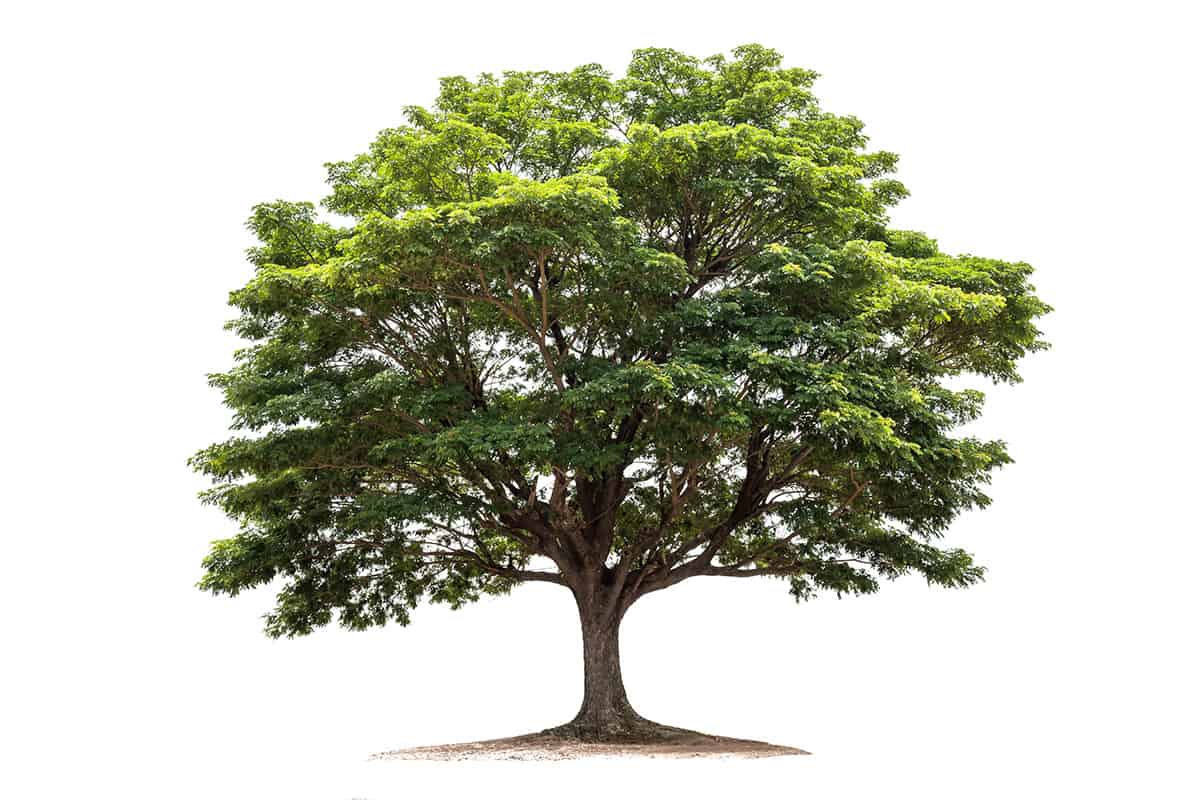
The family of Oak trees includes the ‘Live Oak’ species, which has the highest carbon sequestration capacity of any tree in the world. Different species of Oak also grow in temperate zones, which means we can include projects in Europe and the United States. Oak can store carbon for centuries.
Store your CO2 long-term in healing soils
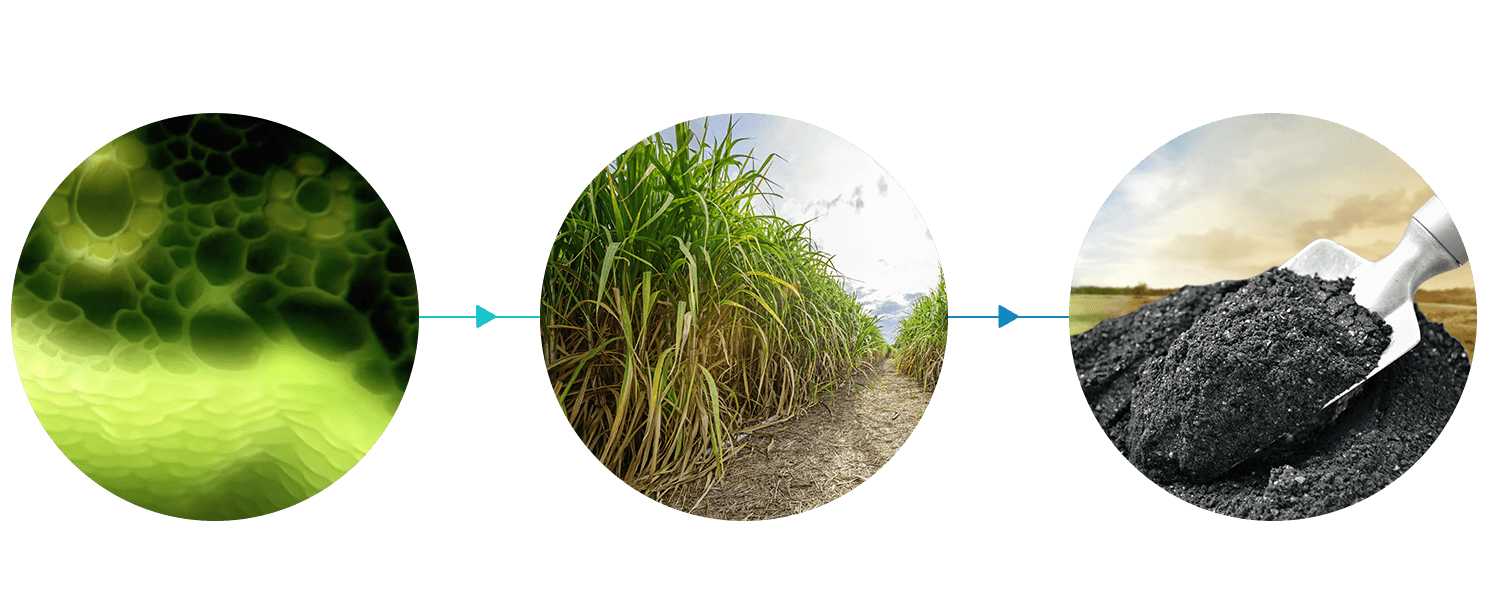
Teak Projects
We intend to store carbon in Teak in three ways; 1) by allowing earmarked trees to continue growing for centuries, 2) as building material and furniture, and 3) by converting the branches and other Teak bioproducts into biochar. Teak plantations typically need 24 years to reach commercially viable size, to then become valuable wood products that last for 75 years. The total carbon removal period is therefore starting at 100 years. All side products and “waste” during Teak processing is then converted to biochar for 1,000+ years permanent storage by adding to soils on farms and in forests.
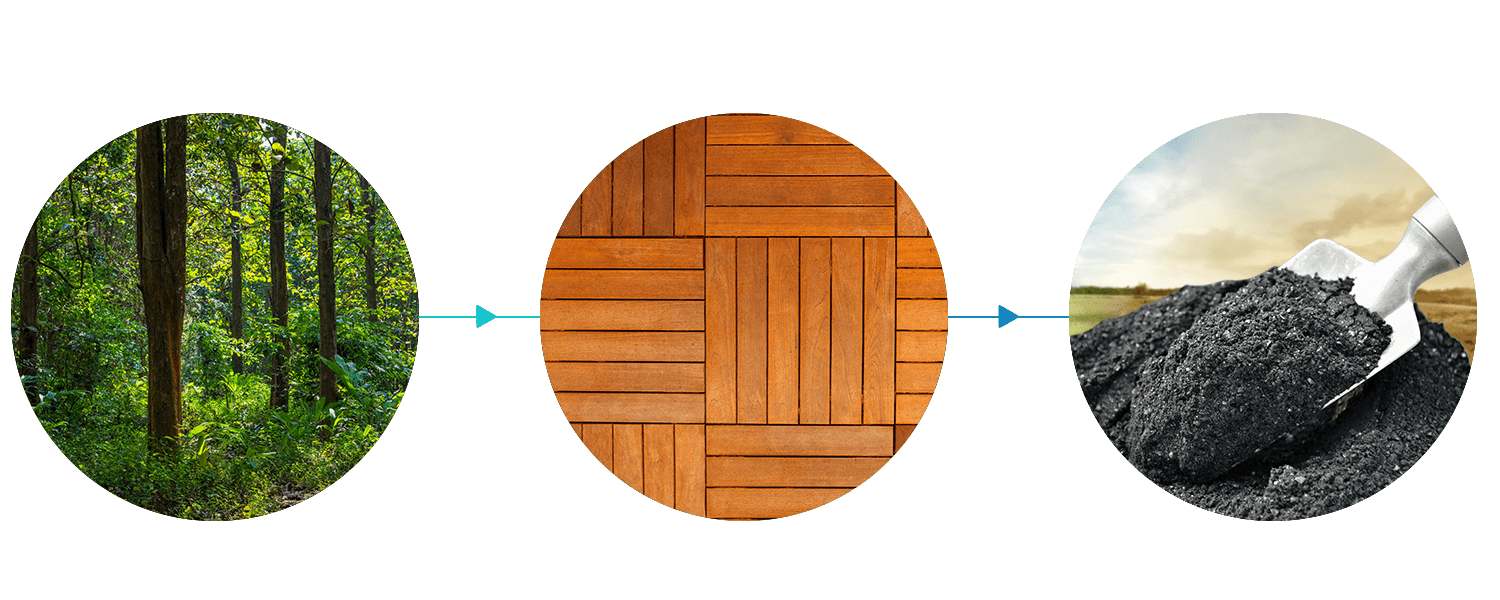
Oak Projects
Our main goal with Oak is to create new « old growth forests » and to store the removed carbon for centuries in living trees. Along the way there will be partial harvests of Oak (thinning) to become building material or furniture, while the forestry residues are once again subjected to pyrolysis for 1,000+ years of permanent storage. Starting in year 5 these forests will provide an income from the harvest of valuable side products.
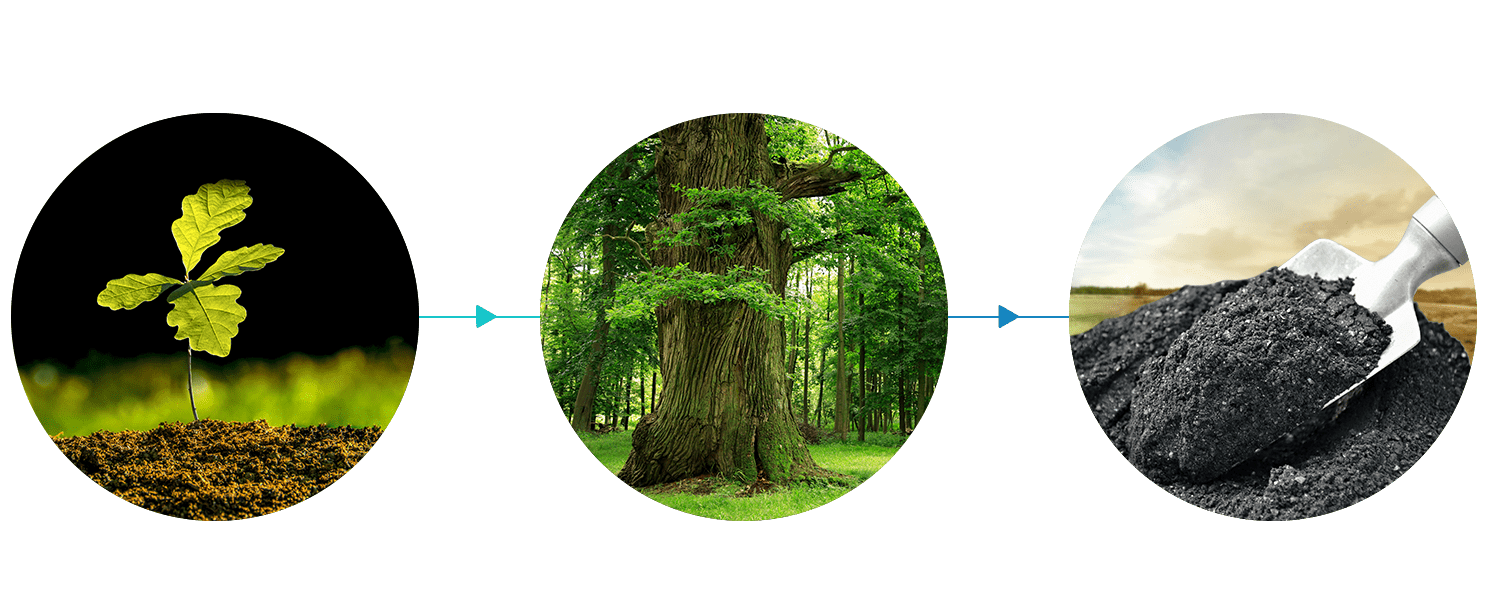
C4 grasses become clean, net-zero emission fuels
C4 grasses become liquid fuel

After years of research and development we have solved the serious ethical and commercial issues that have plagued the existing production pathways for renewable liquid fuels. We do not use food crops as feedstock for future fuel production, and the process is proven at industrial scale. The final fuels will be carbon negative based on an already validated (ISO 14064) full Life Cycle Analysis (LCA).
C4 grasses become solid fuel
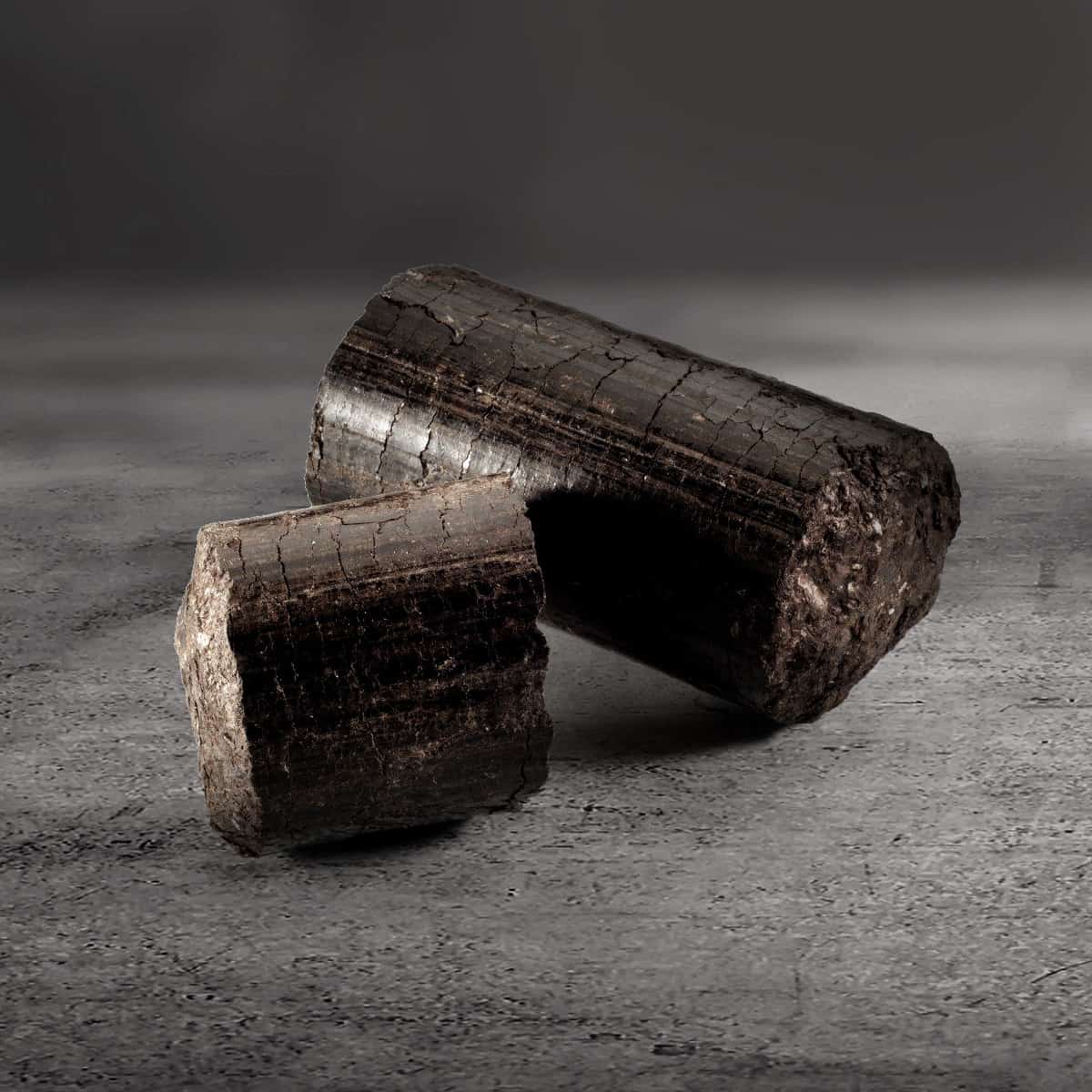
As the current energy crisis in Europe has forced many countries to restart decommissioned coal power plants, there is an urgent need for a carbon negative solid fuel. The same goes for the very large market for burning wood pellets.
Recent studies have shown that many wood pellets come from old growth forests, and that they therefore have an emissions profile similar to fossil coal. We will aim to provide grass based Carbon Negative Fuel (CNF) in such use cases.
Food

We are currently facing a food and fuel crisis, in addition to the well known climate crisis. By enhancing soils on existing farms and by creating new farms on marginal land, we will increase the yields of future food production.
Biochar is well known to increase water retention in soils, increase crop yields and to lower the need for nitrogen fertilizer, thus lowering GHG emissions from farms.
Fiber
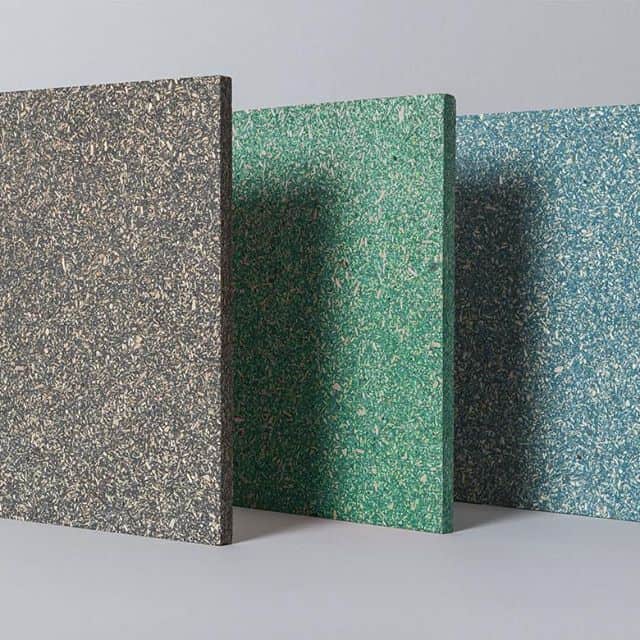
There is an ever increasing demand for biomass derived fibres in the market place to replace carbon intensive building and production materials. Hemp composites can be processed to become stronger than steel.

